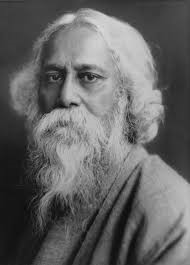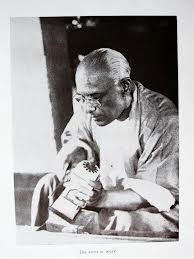|
|
|
|
|
|
|
Genesis of Rathindra Krishi Vigyan Kendra
|
- Nobel Laureate Rabindra Nath Tagore initiated Agriculture and rural development work at Village – Surul (later renamed by Gurudev as Sriniketan), Birbhum from 1912.
- Sriniketan Krishi Vibhag (Sriniketan Agriculture Department) was functional under the aegis of Visva-Bharati up to 1921. “Sriniketan Experiment” was started in the year 1921-22.
- The Institute of Rural Reconstruction was founded in 1922 at Surul at a distance of about three kilometres from Santiniketan. It was formally inaugurated on February 6, 1922 with Leonard Elmhirst as its first Director.
- Thus the second but contiguous campus of Visva-Bharati came to be located in 1923 at a site which assumed the name of Sriniketan. The chief objective was to help villagers and people to solve their own problems instead of a solution being imposed on them from outside.
- Rathindra Nath Tagore, the eldest son of Gurudev Rabindra Nath Tagore was sent to the University of Illinois, Urbana, USA in 1906 to study the Agricultural Science and eventually Rathindranath became the first Agricultural Graduate in whole Asian Continent.
- Rathindra Nath Tagore conducted agricultural experiments at Sriniketan Experiments from 1922. He was the first Vice-Chancellor of Visva-Bharati from 1951 – 1955.
- Rathindra Nath was instrumental in running the “Sriniketan Experiment”, one of the first of its kind experiment in agricultural extension and community development efforts in India, through Institute of Rural Reconstruction to intervene with Agriculture and Village Welfare.
- The core of Sriniketan’s work was Rural Reconstruction. But along with it was also realized that training in various aspects of rural life, such as craft and rural industries, agriculture, horticulture, poultry, animal husbandry, boys’ and girls’ scout, pisciculture, methods of working with people, etc were direly needed. Training in various aspects of agriculture was part of “Sriniketan Experiment” from 1922 itself.
- The erstwhile departments of Visva-Bharati at Sriniketan Campus have been amalgamated into Palli Samgathana Vibhaga (Institute of Rural Reconstruction), with the exception of the independent Faculty of Agriculture which came into existence in 1960.
- Palli Siksha Bhavana (Institute of Agriculture) was established on the 1st. September, 1963 as Palli Siksha Sadana and later renamed as Palli Siksha Bhavana in the Visva-Bharati Act, as amended in the Parliament of India in 1984. Palli Siksha Bhavana (Institute of Agriculture) imparts education in Agricultural Sciences both at undergraduate and post-graduate levels.
- Indian Council of Agricultural Research (ICAR) established the Krishi Vigyan Kendra (KVK) mandated for the District of Birbhum, West Bengal on the 4th. October, 1994 under the administrative control of Palli Siksha Bhavana (Institute of Agriculture), Visva-Bharati, Srniketan, Birbhum, West Bengal.
- This Krishi Vigyan Kendra was named as Rathindra Krishi Vigyan Kendra to pay tributes, homage and regards to Sri Rathindranath Tagore, the “Un-sung Hero of Indian Agriculture”, the man who was the guiding force behind the whole “Sriniketan Experiment”.
|
|

Rabindra Nath Tagore
(1861-1941) |

Rathindra Nath Tagore
(1888-1961)
|
|
|
|